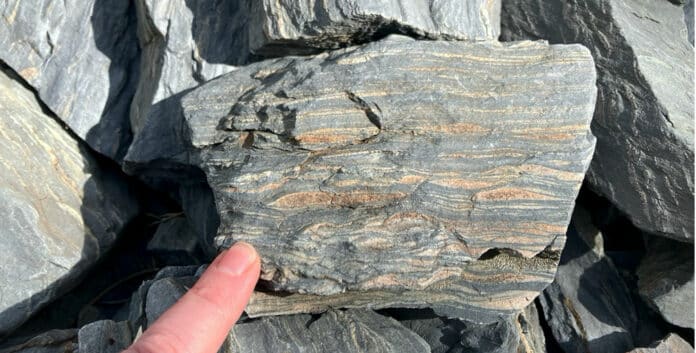Transport of heat from the interior of the Earth drives convection in the mantle. This involves the deformation of solid rocks over billions of years. In recent years, considerable progress has been made in studying assemblages representative of the lower mantle under the relevant pressure and temperature conditions.
In a new study, Caltech scientists modeled the surprising behavior of minerals deep in the planet’s interior over millions of years. Their model shows that the processes are happening opposite to what had been previously theorized.
The lower mantle is primarily composed of bridgmanite, a magnesium silicate. However, it also contains small but considerable amounts of Periclase, a magnesium oxide, and trace amounts of other minerals. Periclase has been found to be weaker and more readily deformable than bridgmanite in laboratory tests; however, these tests did not account for how minerals behave throughout millions of years.
Scientists discovered that periclase grains are stronger than the bridgmanite surrounding them after including these timescales into a sophisticated computational model.
Jennifer M. Jackson, William E. Leonhard Professor of Mineral Physics, said, “We can use the analogy of boudinage in the rock record [image at right], where boudins, which is French for sausage, develop in a rigid, ‘stronger,’ rock layer among less competent, ‘weaker,’ rock.”
“As another analogy, think about chunky peanut butter. We had thought for decades that Periclase was the ‘oil’ in peanut butter and acted as the lubricant between the harder grains of bridgmanite. Based on this new study, it turns out that periclase grains act as the ‘nuts’ in chunky peanut butter.”
“Periclase grains go with the flow but don’t affect the viscous behavior, except when the grains are strongly concentrated. We show that mobility is much slower under pressure in Periclase compared to bridgmanite. There is an inversion of behavior: Periclase hardly deforms, while the major phase, bridgmanite, controls deformation in Earth’s deep mantle.”
For realistic four-dimensional simulations of our planet and for learning more about other planets, it is crucial to comprehend these extreme processes occurring far below our feet. Since there are already thousands of confirmed exoplanets, learning more about mineral physics in extreme conditions can help us understand how planets that are very different from our own evolved.
Journal Reference:
- Cordier, P., Gouriet, K., Weidner, T. et al. Periclase deforms more slowly than bridgmanite under mantle conditions. Nature 613, 303–307 (2023). DOI: 10.1038/s41586-022-05410-9
